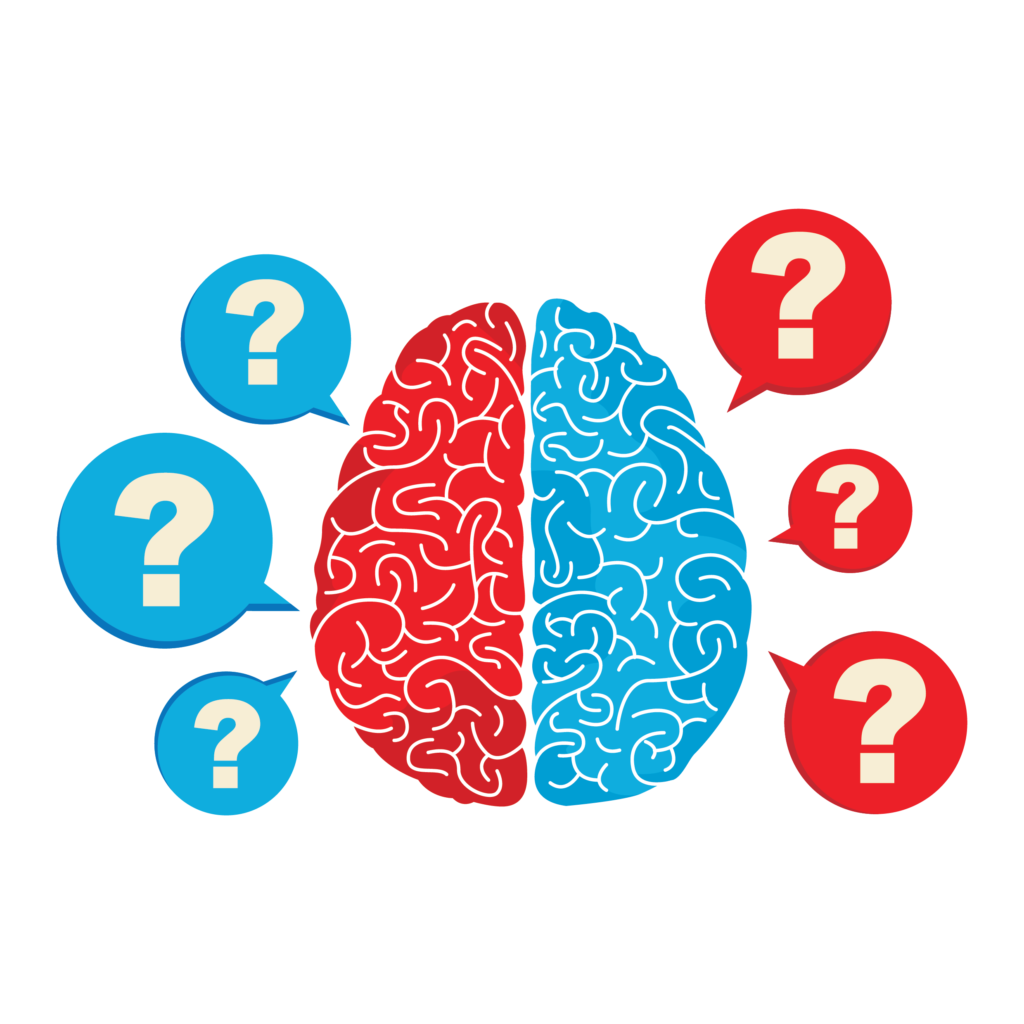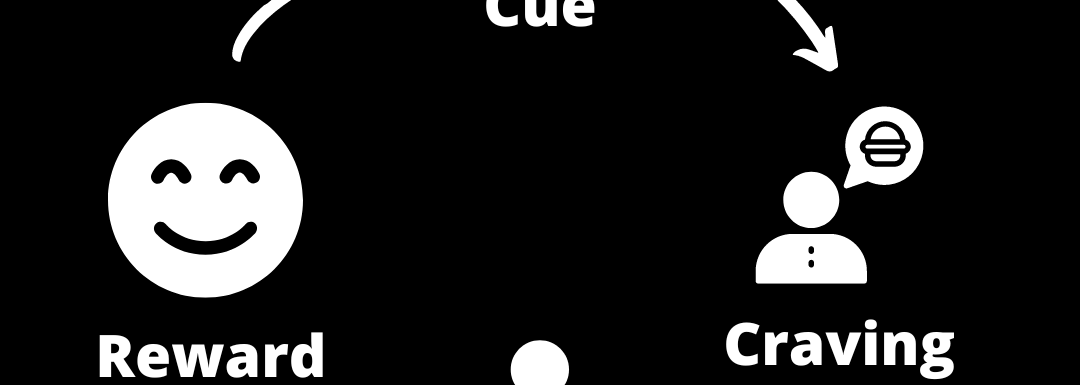
Learning and understanding how habit loops work is a superpower.
What if your #1 tool for building the life you want is already in your hands… but most aren’t using it intentionally? We all have things that we’re trying to work on. It can sometimes seem like you’re spinning your wheels when you put so much effort into doing, or not doing, certain behaviors.
Why?
Because they’ve become a habit.
Our daily life is a function of our habits. Our brain is constantly building new habit loops and reinforcing or refining old ones. The issue with that is that we don’t realize it’s going on most of the time.
Understanding Habit Loops unlocks that brain source code and lets us build habits that serve us while plucking out the ones that don’t.
Here’s how…
First, let’s clarify a “habit”.
The dictionary definition is “a settled or regular tendency or practice, especially one that is hard to give up“.
That doesn’t quite do it justice.
See, a habit is more than a practice. It’s neurological. A habit is a behavior that’s been wired into your brain for you to do with minimal forethought and as efficiently as possible.
Remember your brain’s goal in this life.

Your brain’s primary mission is to keep you alive and passing on your genes.
Back in the Sabertooth Tiger Days, we didn’t have restaurants and grocery stores open 24/7. Energy was at a premium, with time to action being right behind it on the importance scale. If you wasted much of either, chances are you weren’t going to make it.
Thinking and making decisions is expensive, from a caloric expenditure perspective. Hemming and hawing over how to make a fire, collect your daily water, or throw a rock was going to leave you cold, dehydrated, and hungry. Those are all things that your brain will view in the negative.
So the brain developed to conserve time and energy as much as possible.
To help that happen, the brain developed ways to make repeated behaviors go on “autopilot” so that we didn’t have to spend time or energy thinking of the steps.
This is a huge win, but it can go awry.
How the brain builds a habit

When you are faced with a novel situation, your brain’s gotta figure out what action to take.
First, it scans through any past similar situations that you have experienced for ideas. This knowledge bank is a great starting point. When we’re very young, we have few experiences. This is why it’s so easy to build or remove a habit when someone is young. As we age, we have more “kind of like” situations to draw from.
If you don’t have much prior experience, you make a call to try something.
After you experience something new and get some results, the brain says “Ok, how did that go?”
If there was a positive outcome, it’ll likely try it again the next time you’re in that situation.
If the outcome wasn’t positive, it’ll try something else next time.
With a positive outcome, you’ve started to make a connection in your brain. The next time you’re in that situation, it’ll try again. This pattern repeats, and just like wearing a trail across the ground, it gets deeper and stronger every time.
With enough repetition, the brain decides “this is the way we do it” and shifts your behavior into the subconscious. This shift is a huge energy saver, and now you’ve acquired a habit. It now has a stable habit loop to run over and over again.
So how do we change a habit?

If we want to change a habit, then taking on the subconscious brain is very difficult. Once it’s wired in then just stopping or starting a new behavior is nearly impossible through willpower alone.
For example, I’m so used to buckling my seatbelt when I get into my truck that it’s almost impossible for me to not do it.
Without thinking of it, when the door slams, I buckle my belt. I’ve had (at least) tens of thousands of repetitions of that behavior. If I ever try to take off without buckling my belt I often find that I’ve done it even while telling myself not to.
In the case of a seatbelt, I think that’s a positive.
But what if you had a habit that you wanted to change, like mindlessly eating snacks at night and watching Netflix?
Just quitting would be tough. We need to hijack the Habit Loop.
Exploring Habit Loops

The Habit Loop has four parts:
1. The Cue
2. The Craving
3. The Response (what you actually do)
4. The Reward
The Cue
The Cue is the trigger point for your brain to run the habit.
Think of a habit like a subroutine in a computer program. When an event triggers it, the rest of the habit goes off in a sequence until it’s finished.
With many habits, attacking the Cue is a great start.
If you figure out that the Cue for your snack consumption is Netflix at night, then an easy one would be to limit your Netflix time. By avoiding or changing your cues, you can simply avoid the whole habit loop.
Sometimes that’s not possible, though.

The Craving
Next we have the Craving.
This is the (usually) transitory feeling that the Cue has triggered and makes us want to do the Response.
This one is tough to hijack directly. But what we can do is mess with the Motivation to Ability ratio.
All of our behavior is governed by our Motivation to Ability Ratio.
Low motivation to do something? You need a lot of ability to make it worth it. It’s gotta be easy or you’ll just blow it off.
Higher motivation? We’ll work harder to get the result.
So to hijack that we could reduce our ability.
For example, don’t keep snacks in the house, or put them in an inconvenient place.
Now your brain has a different choice – “How much do I really want the snack?” At a certain point, it isn’t worth it.

The Reward
After the Response, we have the Reward.
If we weren’t rewarded for this action at some point, we wouldn’t be doing it over and over again.
This is something that many miss with negative or “bad” habits – They wonder how it can be rewarding?
But somewhere along the line, something positive (from the brain’s perspective) came from it. Maybe they got some praise, or a chemical boost, or maybe some pain they had went away.
Regardless of the original reward, that is why you keep doing it, even if the pleasure has faded.
Reducing the Reward to Expenditure ratio is a powerful tool for habit change.
Either taking away the reward or making it so expensive that it’s no longer a net positive will reduce your brain’s likelihood of utilizing that habit.
Habit Loops in summary:
Taking on a habit head-to-head is almost sure to fail.
Instead, use the Habit Loop:
1. Cue
2. Craving
3. Response
4. Reward
And tease apart the components of your target habit.
From there:
1. Avoid or change the Cue
2. Make the Reward either less rewarding OR make it far more difficult to get.
Give your brain a reason to reconsider whether this is still a “profitable” venture. If it’s not, then you’re well on the way to breaking a habit.
What if you want to build a new habit?
The process is the same.
1. Identify your Cue and Response and expose yourself to them frequently.
2. Make the Reward highly enticing.
3. Make it as small and easy to achieve as possible.
By understanding and being able to target specific parts of your habit loops you’ll soon be able to create new, helpful habits or reduce the intensity of negative habits with ease. To be a little meta, once you get in the habit of working on your habits, it’ll get easier and easier. To get some help on your habits and to go even deeper, I recommend my free course “Ignite the Spark”, which will put you on the path to clarifying and mastering your behavior to engineer your goals, instead of leaving them to chance.
